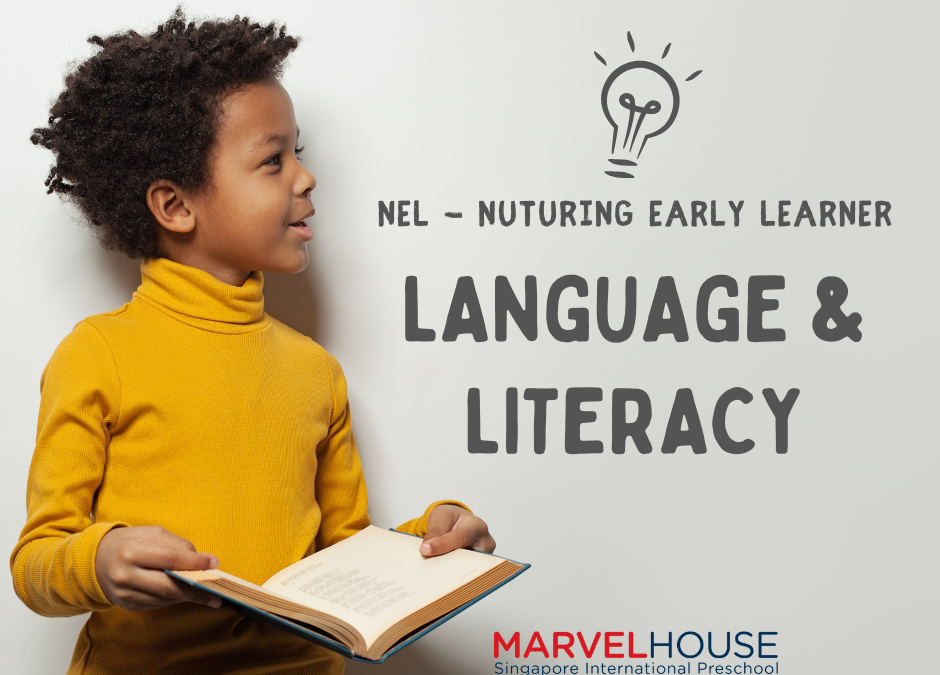
NELs: LANGUAGE & LITERACY PART 1

From the moment they are born, children begin learning languages, learning about languages, and learning via languages. They learn how to utilize language by listening to adults talk and read to them, as well as by interacting with people and playing with their hands.
When children see signs, labels, posters, books, and images on television, they learn what written language looks like. They begin to learn about reading and writing as they see people in their daily lives compiling lists, taking notes, and reading newspapers. Children acquire literate habits as a result of these encounters even before they can read and write properly.
Language and literacy in the early years
Language is about hearing and speaking inside a system with its own rules and norms, whereas literacy is about reading and writing to understand print and transmit meaning via print. Language and literacy development in children is aided by their experiences at home, school, and in the community. They develop their own knowledge as they engage with people and objects, and they use language and tangible representations such as drawing, mark-making, and writing to express what they know and have learned.
Listening and Speaking
Children must hear language in order to learn to speak it, and they must also have opportunities to communicate with people using language.
Playing with their peers and engaging with others offer youngsters actual and relevant circumstances in which to use language. They learn to listen and take turns speaking in talks and discussions as a result of this process. They also learn about tone, gestures, facial expressions, and body language, which will help them grasp what is being said.
Reading
Reading entails deducing meaning from print. When learning to read, most children go through the following stages:
- Pre-reading: Children initially notice that print conveys information. They employ visual clues to make sense of print in their surroundings. Children, for example, know the word “exit” by linking it with the sign over the door.
- Initial reading: As youngsters learn the names and sounds of letters, they utilize this information to decode words and recognize certain words by sight.
- Fluent reading: Children will be able to read more easily as they learn to decipher words faster and more effectively. Children will be able to focus their attention on understanding and making sense of the text when automaticity creeps in.
Children require experiences with oral language and a range of texts to acquire the early literacy abilities listed below, which will aid them in learning to read.
Writing
Reading and writing are intertwined. Learning one helps in the learning of the other. Thus, it is important for children.
